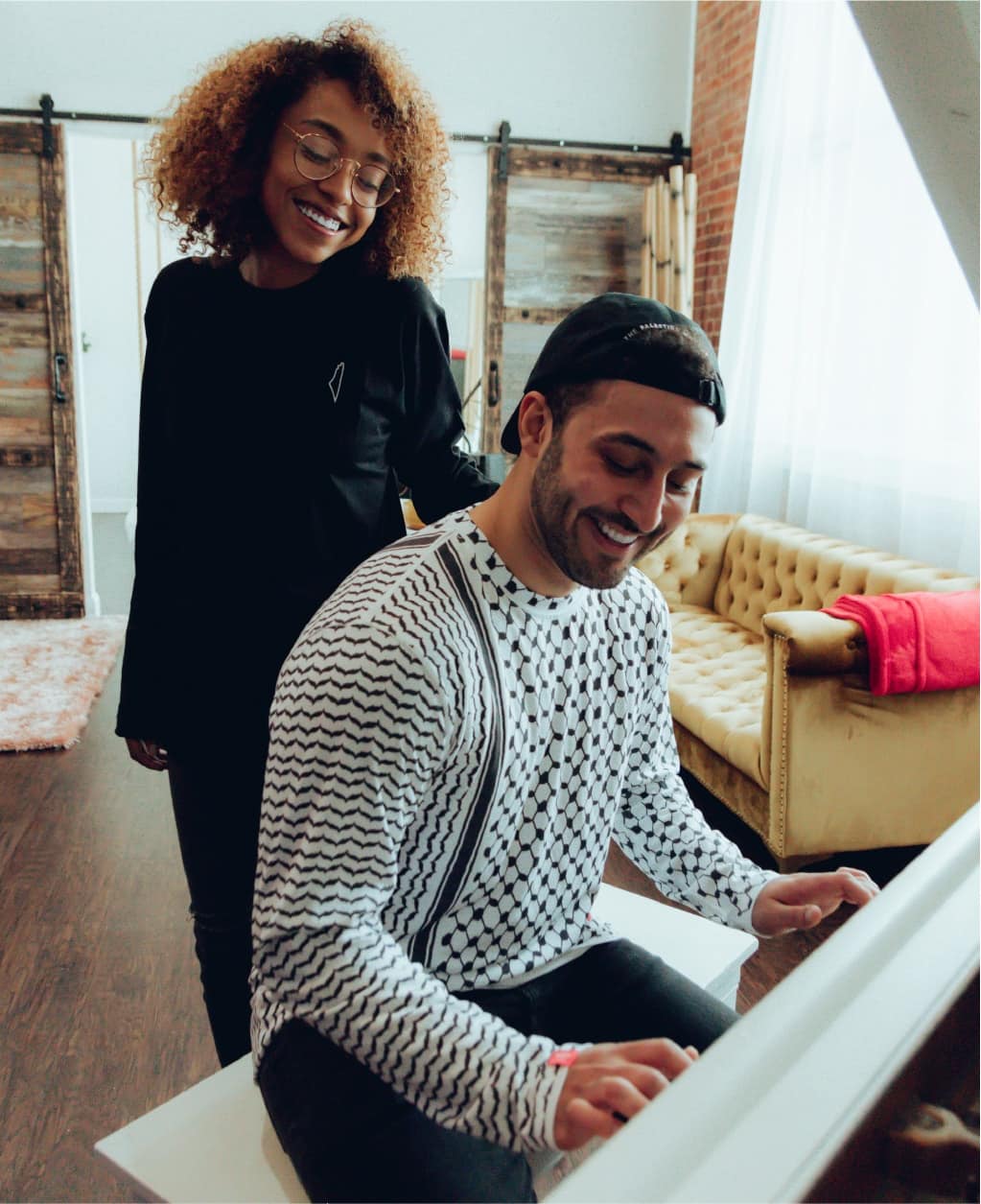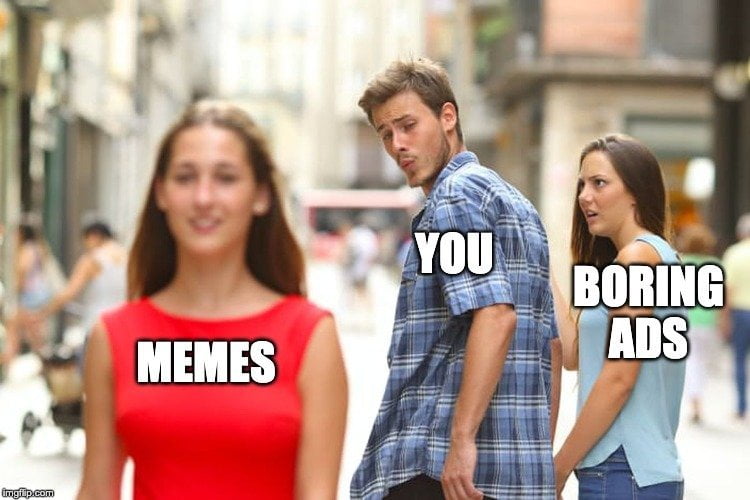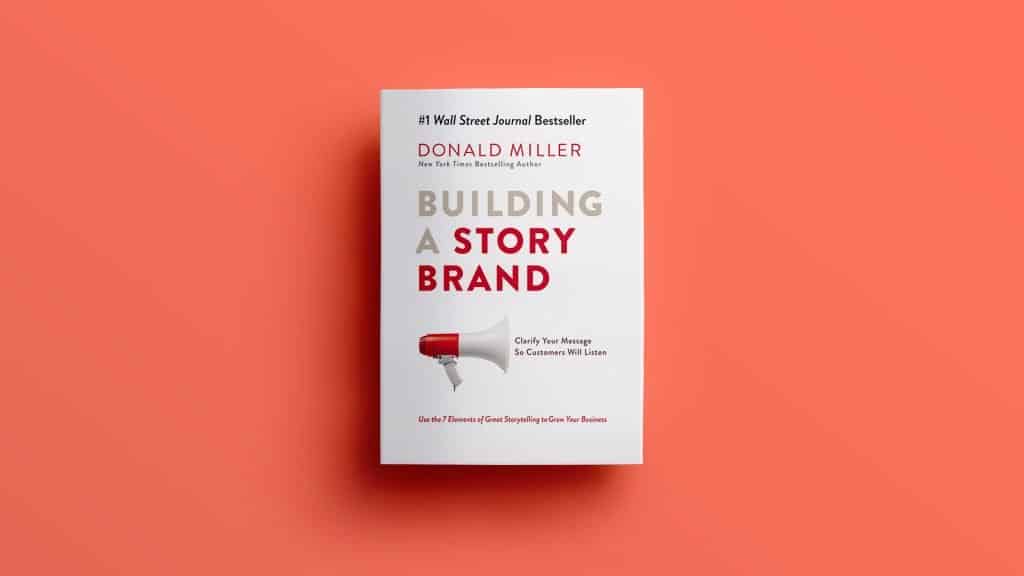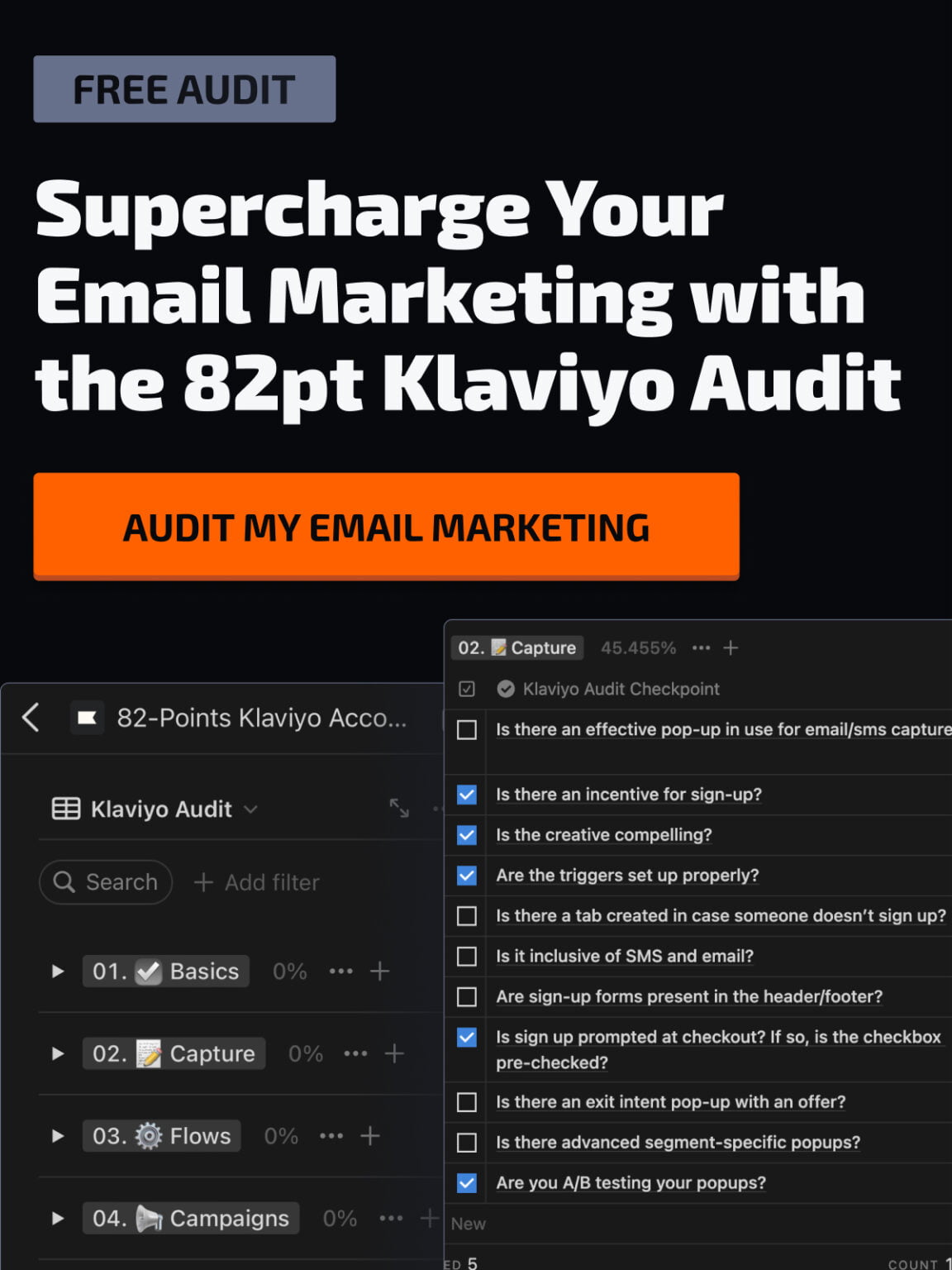Most of Your Ecommerce Marketing is a Money Rabbit Hole
In your ecommerce customer journey, a clear marketing message is crucial for boosting sales and ROI. Let’s begin by discussing what’s wrong with most marketing efforts that don’t cut through the noise of all the other messages customers are bombarded with daily.
Quite frankly, they’re a waste of money.
Often, the problem is not with the product or service offered but how it is communicated.
When you confuse, you lose!
Today, most websites are designed to look good. Content is usually an afterthought. They’re bad at communicating a clear, compelling message that makes customers listen.
The fact is, pretty websites don’t sell things. Words do.
There are three critical mistakes most businesses make when talking about their brands:
- Fail to focus on aspects of their offer that help people survive and thrive.
- Make customers tax their brains too hard trying to understand their offers.
- They focus on their products and not their customers.
Clarifying your message should be your #1 ecommerce customer journey mission
Quality products and services on their own are not enough. Have you ever wondered why McDonald’s has the most sold burgers worldwide? Why does Coca-Cola sell more beverages than anyone else? It is not about the product. It is about the story brands tell.
In the ecommerce customer journey, the race isn’t just about launching products; it’s about crafting compelling outcomes that resonate with customers.
Here’s the deal, what separates the winners from losers is the clarity of our offer And the reason most marketing doesn’t work is that it’s too complicated.
Cut through the noise
In today’s age of immediacy, our message fights against cute puppies on social media. To cut through the noise, we need communication that requires no extra calories to be understood. Our brains are not trained to process complex information quickly. The more predictable and straightforward your communication is, the easier it is to digest.
Storytelling is an extremely effective communication framework because it is a sense-making mechanism. It transforms noise into music. Have you ever wondered how Breaking Bad held your attention for 62 hours (yeah, that’s the entire show’s runtime) while you struggled to keep your customer’s attention for over 3 seconds on Facebook?
The secret is storytelling. And luckily, it is a predictable pattern.
Have you noticed that all stories follow the same flow? That we’ve been hearing the same pattern repeatedly since we were born?
Effective ecommerce storytelling simplifies the customer journey, making your brand message easily digestible.
Ready to learn the Brand Storytelling Framework and how to apply it to the Ecommerce Customer Journey?

The Brand Storytelling Framework
The Brand Storytelling Framework, pioneered by Donald Miller, is a cornerstone in ecommerce copywriting. He does a great job describing the flow of nearly every story:
A CHARACTER who wants something encounters a PROBLEM before they can get it. At the peak of their despair, a GUIDE steps into their lives, gives them a PLAN and CALLS THEM TO ACTION. That action helps them avoid FAILURE and ends in SUCCESS.
Nearly every fiction book you read, and every movie you watched, follow this script.
Steering away from this flow complicates our communication. Imagine if every car you drive was completely different. One accelerates with your hands, the other by voice, and one with your eyes. You would need to re-learn how to drive every single time.
Although this sounds stupid, it is precisely what most brands do. They try to reinvent the wheel in every aspect of their businesses. And this is why they fail.
No one wants to drive a different car every day.
There are three questions your audience has when interacting with your marketing:
- What do you offer?
- How will it improve my life (WIIFM = What’s In It For Me)?
- What do I need to do to buy it?
Clean up the clutter, and answer these questions using a flow they understand. Your feedback will go from “That’s cool” to “I need this.”
Remember: “If you confuse, you lose.” – Donald Miller
So let’s start diving into the framework with the most important piece — the character.

THE CHARACTER: Your customer is the Hero, not your Brand.
First, scratch everything you know about audiences. Audiences are broad, and in communication, you need to be specific.
If you try to communicate with everyone, you communicate with no one.
In the ecommerce journey, targeting customer personas (or customer avatars) is key to crafting a message that converts.
We’ve designed a fill-in customer personas worksheet that can help you quickly understand who you are talking to. Once you find your persona, you must define what they want and guide them.
Remember, customers don’t buy a drill; they buy a clean hole in the wall.
In storytelling, identifying something your audience wants is called a “story gap.” The idea is to illustrate a gap between your customers and what they want. This gap will attract your customers because they wonder if and how it will close. Curiosity is what drives much of human behavior.
A successful story gap is backed by ambition. You must define and clearly communicate “WHY” your customers want what they want — why the gap exists. Find the primary need your customers have that your product solves. Focus on the need, not the product.
Abraham Maslow was a psychologist who became famous for designing Maslow’s Hierarchy of Needs. Use this to find what’s the primary need you solve.
Here is a list of Maslow’s Hierarchy of Needs pyramid from top to bottom.

Self-Actualization: Mastery, Morality, Creativity, Problem Solving
Self-Esteem: Confidence, Achievement, Respect, Status, Uniqueness, Competence
Belongingness: Love, Friendship, Intimacy, Relationships, Recognition, Attention
Safety: Financial, Environment, Health, Property, Shelter, Freedom
Physiological: Air, Food, Water, Sex, Sleep, Clothing
Choose the primary need for your product to help your Hero to fulfil. A problem creates the space between your customer and the need he or she desires.

THE PROBLEM: Stop selling solutions to external problems; customers buy solutions to internal problems.
A common pitfall in ecommerce marketing is the focus on solving external problems, overlooking the customer’s emotional needs.
They highlight features, specifications, and the technical aspects of their products. While these are important, they often overlook the internal problems that their customers are facing.
Let’s be honest: No one buys a high-end coffee maker because it has a 24-hour programmable timer or an auto-shutoff feature. They buy it because they’re tired of their mundane morning routine and want to start their day with a touch of luxury. They’re seeking the emotional satisfaction of sipping a perfect cup of coffee without leaving their home.
In the ecommerce customer journey, the real magic happens when you address these internal problems. When you tap into the emotional needs and desires of your customers, you’re not just selling a product; you’re offering a solution to a problem they might not even realize they have.
So, the next time you’re crafting your marketing message, don’t just list the features of your product. Dive deeper. Ask yourself, “What internal problem is this solving for my customer?” Is it giving them more time with their family? Is it making them feel more confident? Is it simplifying a complicated part of their life?
By focusing on internal problems, you’re not just making a sale but building a relationship. In the world of ecommerce, relationships are the cornerstone of long-term success

THE GUIDE: Customers aren’t looking for a hero; they’re looking for a guide.
Imagine you are looking to get fit like a Hollywood star. The Guide you are looking for is a personal trainer or a nutritionist. You don’t expect your trainer to lift for you neither your nutritionist eats for you.
If you sell modular dumbbells, don’t say your product makes people fit. Instead, focus on the ways your product helps them get fit.
If this doesn’t make sense, don’t worry, we will talk more about this in the next section.
In the ecommerce journey, your brand serves as a trusted guide, providing valuable solutions that address your customer’s needs.
As a guide, you want to be a trusted and beloved character that offers the tools, encouragement, and wisdom to help your Hero overcome villains and fulfil their needs.
You must have the empathy and humility to see the story is not about you but the Hero. This is important. Your message should evoke your customer’s success, not yours.
You can only win when your customers do.
You achieve that by providing them with a plan with empathy and authority.

PaliRoots: Build a Fan Base with a Heart-Warming Customer Journey
Create a loyal community for your ecommerce by implementing a clear customer journey and increase your sales by 298%.

THE PLAN: Customers trust a guide who has a plan.
This is common when it comes to execution but unusual in sales. As the product inventor, you are used to your product and know how it works. Your customers don’t. Assume that you are selling supplements and give them clear, concise instructions on how to use them.
Who would trust a general who doesn’t have a plan? So why should your customers trust you if you can’t clearly explain yours?
In the ecommerce journey, a well-laid-out plan builds customer trust and drives conversions.
Even though this is common sense, it is widely overlooked in branding.
** AVENGERS ENDGAME SPOILER ALERT **
(if you haven’t watched, go do it now)
In this framework, your plan is the bridge that will cross the story gap between the Hero and the goal. Think of Ant-Man returning from the quantum realm to guide Iron Man to the machine that connects them to other realities where the infinity stones still exist. Ant-Man gave the Avengers the hope and wisdom to achieve their ultimate path.
You have the plan to unlock your heroes’ full potential. Communicate it with empathy and authority, and they will trust you. If you fail to do so, they will be confused and will move to the next funny meme – don’t BS me… you know this is true; you do that too.

Understand this, your plan may be obvious, but you still need to lay it out to your personas. It gives them the confidence to move forward and become customers.

THE CALL TO ACTION: Challenge your Hero to take action.
This is the most crucial part of the story. If Ant-Man hadn’t reminded Tony Stark of Peter Parker, he would never have built the machine necessary to fix what Thanos did. When the time to take action comes, you must clearly and boldly ask them to take action.
In ecommerce copywriting, a compelling Call to Action (CTA) is essential for converting potential customers into loyal ones.
If you (the Guide) honestly believe your product (the plan) will help your customer (the Hero) achieve their full potential to achieve success or avoid failure, do whatever is in your control to make them purchase your product.
There are a million reasons why customers would object to your offer. Sometimes they need encouragement to leap. If your product can truly help them, challenge them to take action.
There are two types of calls to action you may use to convert them into heroes:
- Direct — such as “place an order now”
- Transitional — a small step towards an eventual purchase
Both calls to action should be used at different customer journey stages. Let’s take a relationship, for example. When you meet someone, you should ask for their phone number (transitional) instead of asking them to lie in bed with you (direct).
Don’t get me wrong! Direct calls to action may work depending on how drunk you are, but it is unlikely without intimacy. The same goes for your Brand.
If your customer never heard of you, don’t ask them for a big commitment.
While direct calls to action are obvious, transitional calls can be shaped in several ways, such as lead magnets, testimonials, samples, trials, etc…

AVOID FAILURE: No one wants a tragic ending for themselves.
As humans, we would rather avoid pain than seek pleasure. Here is a story for you:
Imagine you were sleeping in the comfort of your own bed, soft sheets, and pillow, in a dark room with fresh air. Until your phone starts to ring like the end of a UFC fight. You wake up with your heart rate at 180 bpm, answer the phone, and it is your neighbor: “Hey, I just got home from work, and it seems like three guys are stealing your tires on the driveway right now!”.
In this case, you would say thank you, call the police and turn on the garage door light to scare them off.
Now, imagine if the same situation happens, but instead, your neighbor says: “Hey, I just got home from work, and the tire shop is giving a set of tires to whoever goes downtown to get it tonight!”. In that case, you probably wouldn’t be as happy. Even though this is a set of brand new tires, while yours are used.
It is in our nature to avoid pain (or failure) before seeking pleasure (or success).
In the ecommerce journey, highlighting the risks of inaction can propel customers to purchase.
Your story should remind the Hero that your plan helps them avoid chaos. Make sure to mention them throughout the story repeatedly. These reminders laying out the negative stakes of “failing to act” provide the urgency typically needed to propel them forward.

AND HELPS THEM WIN: Never assume people understand how your ecommerce journey can change their lives. Tell them!
After painting a picture of what would happen if they don’t act, illustrate what will happen if they do! When doing so, it is crucial to demonstrate a compelling image of an achievable future.
Be clear and specific so your Hero can see themselves in that future. In the ecommerce journey, clarity and specificity are key to helping customers envision the benefits of your product.
There are three effective ways to bring your story to a happy ending. Good stories enable heroes to achieve at least one of the following psychological desires:
- Win a sort of power or position/status.
- Be unified with somebody or something that makes them whole.
- Experience some self-realization or transcendence that makes them whole.
When you help your customers achieve one of these, they will refer friends and return for more. Help them see the future of this brand/customer relationship and create win-win situations.
Implementing Brand Storytelling Framework in Your Ecommerce Customer Journey
Now that you have grasped the Brand Storytelling Framework, it’s crucial to integrate it into your ecommerce customer journey.
Begin by crafting detailed buyer personas.
These personas will be the cornerstone of your ecommerce copywriting and marketing strategies.
This will help you fully understand the story behind your customers.
In the fast-paced world of ecommerce advertising, effective storytelling can set you apart from the competition. Utilize this storytelling framework to create compelling value statements, taglines, and ecommerce marketing materials that resonate with your target audience.
At Harpia, we specialize in scripting compelling storytelling that makes your customer the hero of your brand story. Then, we help spread the story through digital marketing strategies to increase ecommerce sales.




